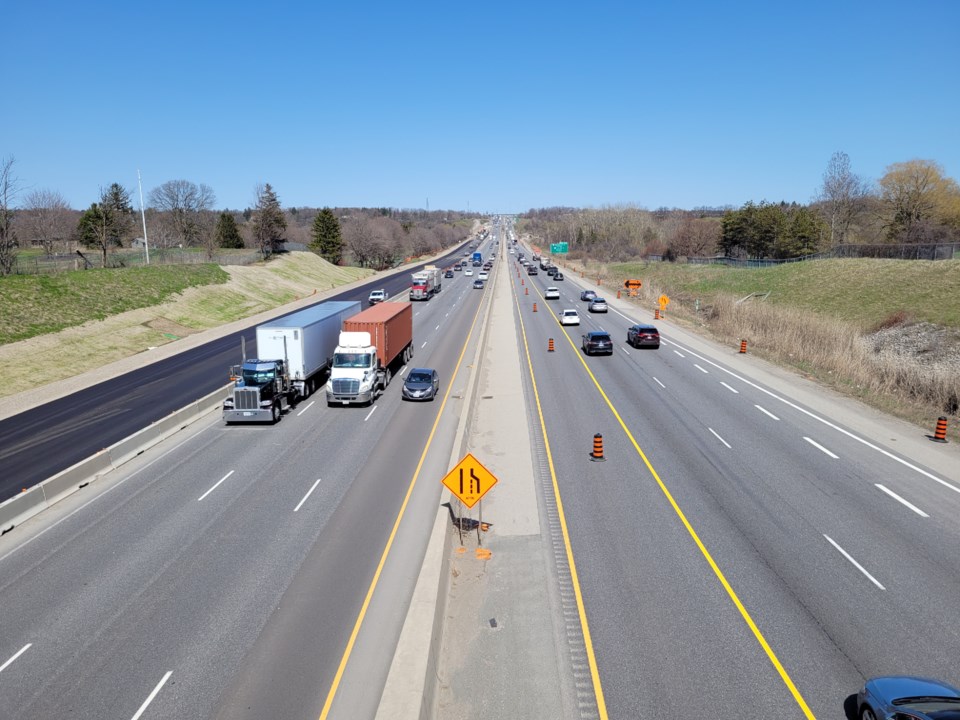Flooding: A Serious Threat To Livestock

Table of Contents
The Immediate Dangers of Flooding to Livestock
Flooding presents a multitude of immediate threats to livestock, endangering their lives and well-being. The speed and force of floodwaters create perilous situations that require immediate action.
Drowning and Hypothermia
Drowning is an obvious and immediate danger. The power of floodwaters can easily sweep animals away, particularly those less agile or unable to swim effectively. Hypothermia is another significant risk, especially for young animals.
- Animals at high risk: Sheep, calves, piglets, and poultry are particularly vulnerable due to their size and inability to swim long distances.
- Speed of hypothermia: Cold water rapidly depletes body heat, leading to hypothermia and potentially death within a short timeframe, often much faster than in air of the same temperature.
- Impact of cold water: Cold water immersion can also cause shock, respiratory distress, and other life-threatening complications.
Injuries and Trauma
The force of floodwaters, combined with debris carried by the currents, can inflict severe injuries on livestock. Collapsing structures add to the potential for trauma.
- Common injuries: Broken bones, lacerations, internal bleeding, and head injuries are common.
- Treatment difficulties: Treating injured animals in the chaotic aftermath of a flood is incredibly challenging, requiring immediate access to veterinary care, which may be unavailable in the immediate aftermath.
Disease and Infection
Flooding creates unsanitary conditions, increasing the risk of disease outbreaks among livestock. Contaminated water sources spread pathogens easily.
- Common post-flood diseases: Leptospirosis, salmonellosis, and various bacterial and viral infections are frequently observed after floods.
- Hygiene and vaccination: Maintaining strict hygiene protocols and ensuring animals are up-to-date with vaccinations are crucial in preventing disease outbreaks.
Long-Term Effects of Flooding on Livestock and Farms
The impact of flooding extends far beyond the immediate aftermath, causing long-term consequences for livestock and the entire farm operation.
Loss of Pasture and Feed
Flooding often destroys grazing land and renders feed supplies unusable, leading to malnutrition and starvation, especially if access to replacement feed is difficult.
- Impact on feed types: Hay, silage, and other stored feeds can become contaminated with mud, water, and debris, rendering them unsafe for consumption.
- Accessing feed post-flood: Damaged roads and infrastructure can hinder the delivery of replacement feed, exacerbating the problem.
Damage to Farm Infrastructure
Floods cause significant damage to essential farm structures, impacting animal welfare and operational efficiency.
- Cost of repairs: Repairing or replacing barns, fences, water troughs, and other infrastructure can be extremely expensive, placing a considerable financial strain on farmers.
- Disruption to routines: Damage to facilities disrupts daily routines, making it difficult to care for animals effectively.
Economic Consequences
The financial losses incurred due to flooding can be devastating, encompassing various aspects of farm operations.
- Loss of income: Death of animals, reduced productivity, and damaged infrastructure all contribute to significant losses in income.
- Importance of livestock insurance: Comprehensive livestock insurance is crucial to mitigate the financial burden resulting from flood-related losses.
Preparing for and Mitigating Flood Risks to Livestock
Proactive planning and preparation are crucial for minimizing the impact of flooding on livestock.
Pre-Flood Planning and Prevention
Developing a comprehensive flood preparedness plan is essential for protecting your animals.
- Pre-flood actions: Secure buildings, gather emergency supplies (feed, water, medications), identify high-ground areas for evacuation, and establish emergency contact information.
During a Flood: Protecting Your Animals
Safely evacuating livestock is paramount when a flood is imminent.
- Moving animals: Use calm, assertive methods to move animals to higher ground. Different species will require different approaches. Utilize trailers or other suitable transport if feasible. Prioritize the safety of your handlers as well.
Post-Flood Recovery
The post-flood recovery process requires careful attention to detail.
- Post-flood steps: Assess damage, provide veterinary care for injured animals, safely dispose of carcasses (following local regulations), clean and disinfect affected areas, and seek assistance from local authorities and veterinary services.
Conclusion
Flooding poses a severe and multifaceted threat to livestock, causing immediate dangers like drowning and hypothermia, as well as long-term consequences such as feed loss and economic hardship. Protecting your livestock from flooding requires a proactive and comprehensive approach, emphasizing preparedness and mitigation. Develop a flood preparedness plan for your livestock today, including evacuation routes, emergency contacts, and a post-flood recovery strategy. Safeguard your farm animals and your livelihood by taking action now. Don't wait until it's too late; protect your livestock from the devastating effects of flooding.

Featured Posts
-
 The Conclave A Step By Step Guide To Papal Election
May 07, 2025
The Conclave A Step By Step Guide To Papal Election
May 07, 2025 -
 Pittsburgh Steelers Wr Trade Draft Day Surprise On The Horizon
May 07, 2025
Pittsburgh Steelers Wr Trade Draft Day Surprise On The Horizon
May 07, 2025 -
 Premier Fords Call For Highway 401 Tunnel Nation Building Or Controversial Project
May 07, 2025
Premier Fords Call For Highway 401 Tunnel Nation Building Or Controversial Project
May 07, 2025 -
 Lotto 6aus49 Ziehung Vom 9 4 2025 Alle Gewinnzahlen Im Ueberblick
May 07, 2025
Lotto 6aus49 Ziehung Vom 9 4 2025 Alle Gewinnzahlen Im Ueberblick
May 07, 2025 -
 Is Ke Huy Quan In The White Lotus Season 3 Kenny Cameo Explained
May 07, 2025
Is Ke Huy Quan In The White Lotus Season 3 Kenny Cameo Explained
May 07, 2025
